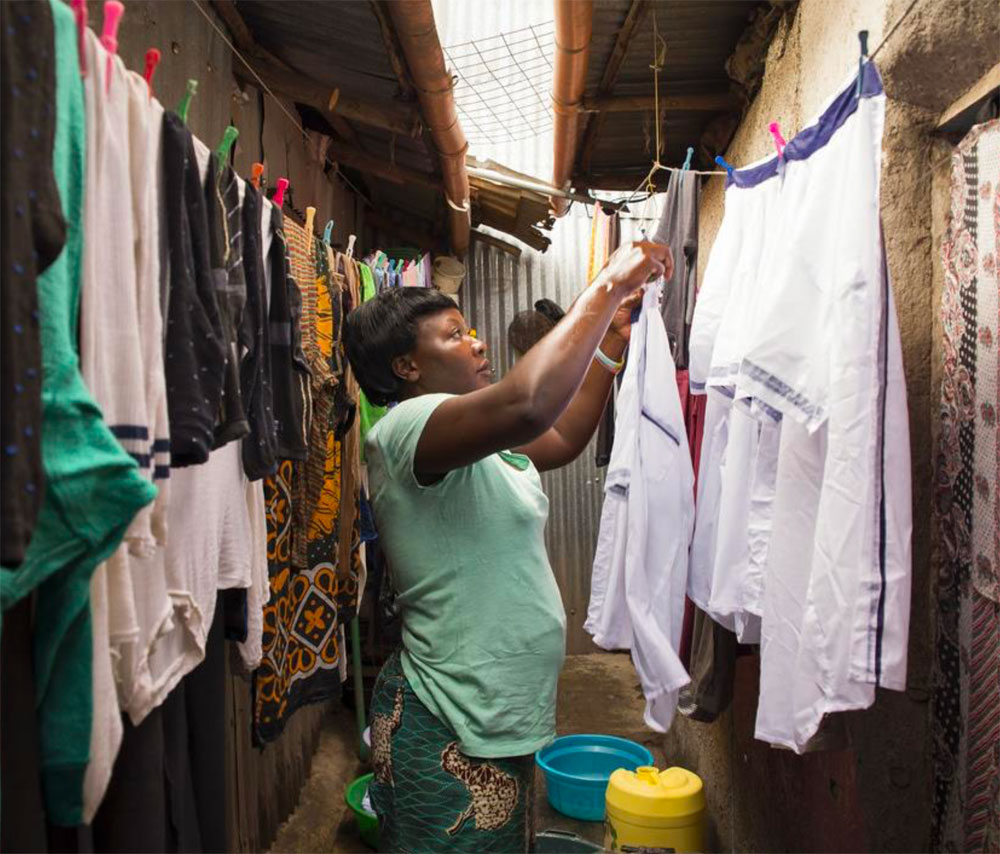
January 19, 2020; CNN
NPQ has written repeatedly about the complicity of US nonprofits in underpaying care workers, who in this country are largely women and of color. We have critiqued the field and social advocates in general for not advocating more vigorously for living wages for this workforce, which is expected to grow enormously as the elder population grows. But there are also millions of women who do the same work for free for family members, and there are larger advocacy questions here to which civil society must attend. These have to do with tax frameworks, as is pointed out in a recent Oxfam report, complete with examples of policies that might remediate the longstanding problem.
Reporting for CNN, Charles Riley notes that a new report from Oxfam International estimates the value of unpaid care work by women aged 15 and over is $10.8 trillion a year and represents a total of 12.5 billion hours a year of unpaid labor. This finding comes from a new 64-page report by Oxfam International, Time to Care: unpaid and underpaid care work and the global inequality crisis.
Oxfam has typically released reports in advance of the World Economic Forum, a leading gathering of global elites in Davos, Switzerland, which will have its 50th annual meeting this week. Last year, NPQ covered the report’s release, which found record economic inequality. This year, the gap fell slightly, as worldwide billionaire wealth declined from last year’s record level of $9.228 trillion to $8.669 trillion. This is still, however, the second-highest number in human history. Billionaire wealth has increased at an average annual compounded rate of 7.4 percent a year between 2008 and 2019.
Despite the one-year decline in the value of world billionaires’ asset portfolios, the world’s 2,153 billionaires still have more wealth than the world’s poorest 4.6 billion people. Additionally, Oxfam calculates that the world’s wealthiest one percent have more wealth than the world’s poorest 6.9 billion people. Given today’s estimated world population of 7.577 billion, this means the top one percent have more wealth than the bottom 91 percent of the world’s population.
What is new in this year’s Oxfam report, however, is its gender analysis and its focus on the unpaid care labor performed by women across the world.
How significant is Oxfam’s finding that women perform $10.8 trillion in unpaid labor worldwide? Well, it is a little over half the annual gross domestic product of the United States (most recently calculated as $21.54 trillion). It is also roughly three times the global value of the tech industry (currently valued at $3.2 trillion, according to Oxfam).
Sign up for our free newsletters
Subscribe to NPQ's newsletters to have our top stories delivered directly to your inbox.
By signing up, you agree to our privacy policy and terms of use, and to receive messages from NPQ and our partners.
It is, of course, enormously complicated to put a market value on work that by definition is unpaid—and therefore outside the market. In all likelihood, that $10.8 trillion figure is an underestimate; the authors note in the report that they came to that number using “the minimum wage and not a living wage.”
Also, the research team’s estimate “does not take account of the broader value to society of care work and how our economy would grind to a halt without this support. Were it possible to put a figure on this support, the total value of unpaid care work would be even higher.” And the study is further limited by the fact that the authors could only include “countries where time-use and minimum wage information simultaneously exist.” All told, the study was able to obtain and analyze data from 72 of the world’s 195 nation-states.
In a methodology appendix to the report, Oxfam reveals the math behind the calculations and breaks down the numbers by country. Overall, Oxfam reports that 78 percent of the unpaid work consisted of domestic chores/services, 17 percent caregiving services, and four percent unpaid community services. For the United States, Oxfam calculated the value of unpaid women’s labor to total $1.48 trillion, including $1.08 trillion in domestic chores/services, $245 billion in unpaid caregiving services and $150 billion in unpaid community services.
A small sliver of good news is that the burden of unpaid women’s labor is on a downward trend; however, that reduction is slow. The Oxfam research team estimates that “between 1997 and 2012 women’s time spent on unpaid care work decreased, on average, by one minute per year (from 264 to 249 minutes).” In the main report, the Oxfam team adds, “Women in rural communities and low-income countries spend up to 14 hours a day on care work, which is five times more than men do in such communities. This inequality is set to continue for generations: if current trends in the gendered distribution of care work continue, it will take 210 years for unpaid care work to be equally shared between women and men.”
To address the unpaid care gap, the report recommends increasing the effective global wealth tax on the top one percent of wealth holders by 0.5 percentage points. “Taxing an additional 0.5 percent of the wealth of the richest one percent over the next 10 years, the report adds, could finance “investments needed to create 117 million jobs in education, health, and elderly care.”
According to the Oxfam research team, this would mean doubling the collection of wealth tax on the world’s richest one percent, since the average effective rate of taxation on wealth presently is 0.55 percent. The report’s methodology section notes that in some countries, such as Luxembourg, Israel, and Uruguay, the wealthy already pay an effective wealth tax rate of 1.2 percent or higher, suggesting that such an increase in taxation is economically supportable.
If we in civil society are here to address issues of justice and equity, we must consider the larger frameworks that set the stage. It is well past time for more vigorous tax advocacy from groups representing the interests of low income and marginalized workers.—Steve Dubb













